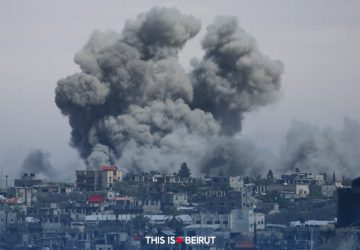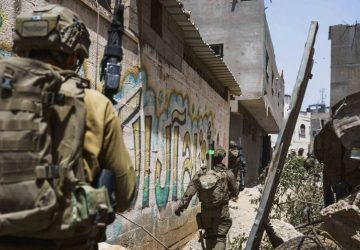Listen to the article
An escalation that is steadily gaining momentum, yet, at least for the time being, is still under control … This impression stems from the ballistic missile attack launched on Monday by the Iranian Islamic Revolutionary Guard Corps (IRGC) against Erbil, the capital of autonomous Iraqi Kurdistan. The aggression, the first of its kind since the onset of the conflict in Gaza on October 7, unfolds amid a series of missile strikes by Yemen’s Houthi rebels, targeting merchant vessels navigating the Red Sea.
In appearance, the region looks as if it is inexorably sliding towards a widespread, large-scale conflagration. Conflict hotspots are emerging here and there, expanding into new geographical areas in the aftermath of the Gaza war. It started on the Lebanese-Israeli border, then escalated with drones targeting American positions in Iraq and Syria, followed by incidents in the Red Sea and Yemen, and lately Erbil.
Israeli raids and bombings have, in the meantime, reached targets deeper in southern Lebanon, and in one instance last week, even a territory north of the Litani River, in the region of Iqlim al-Tuffah, was hit.
The direct and blatant engagement of the IRGC through the strike on Erbil, launched from Iranian territory, has heightened concerns of an uncontrollable escalation. In this context, a fundamental question arises: Why opt for launching ballistic missiles against Iraqi territory instead of directly targeting Israel or even the American fleet in the Red Sea? The Pasdaran, or IRGC, were quick to announce that the attack targeted a Mossad office in Erbil, an allegation swiftly denied by official Iraqi sources and observers on the ground. The Iranians later admitted that the attack was targeting anti-Iran Kurdish organizations. However, it was a well-known Kurdish businessman and his family who fell victim to the aggression.
This succinct chronology of events highlights the careful strategic calculations of the “blows” perpetrated by the three primary actors in the ongoing conflict—the United States, Israel and Iran—so as not to overly provoke the adversary. Each hopes to score points to strengthen or cement its position, in anticipation of crucial future negotiation. However, this is all done without crossing certain limits and red lines, which all tacitly recognize should not be violated. A meticulously orchestrated and controlled escalation …
In parallel, Israel does not hesitate to deliver impactful blows to Hezbollah. However (at least for the time being), it stops short of engaging in a full-scale war. This approach allows Tehran’s ally to present itself as a “resistant” force and provide justification for its extensive militia deployment in the South, a strategy that can be leveraged in due course. In return, Hezbollah meticulously calculates its retaliatory actions.
As for the Houthi rebels in Yemen, remote controlled by Tehran, they disrupt international maritime traffic in the Red Sea but refrain from directly targeting US warships. The American and British attacks on Houthi positions and infrastructure were practically pre-announced, with media outlets in Washington and London serving notices several hours in advance.
Western airstrikes will certainly reduce the nuisance capacity of Iran’s allies without eliminating them entirely. This will enable Tehran to swiftly compensate for losses in military hardware. When the Revolutionary Guards join the fray, their focus will be on attacking Iraqi Kurdistan rather than Israel.
Hurting the adversary, more or less severely depending on the circumstances, but without putting it out of action, thus prolonging the fight—like Tom and Jerry …
We can only hope that, one day—preferably not too far away—this intricate cat-and-mouse game will evolve into a pursuit for a comprehensive, rational and enduring resolution that would finally put an end to the decades-long hardships endured by the populations of this region.





